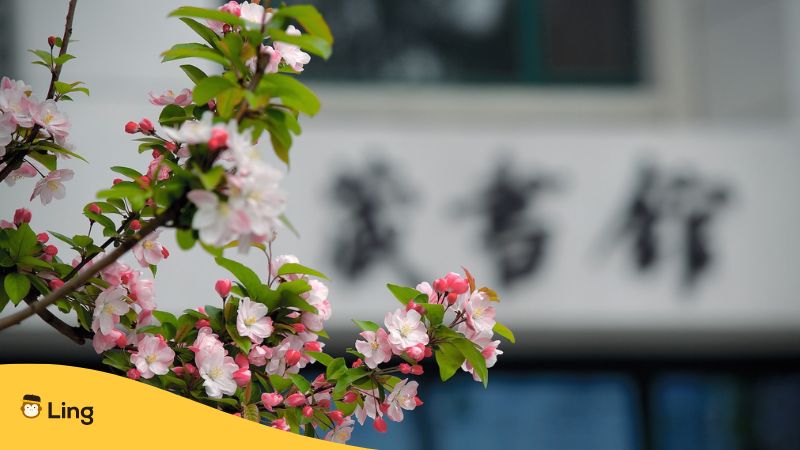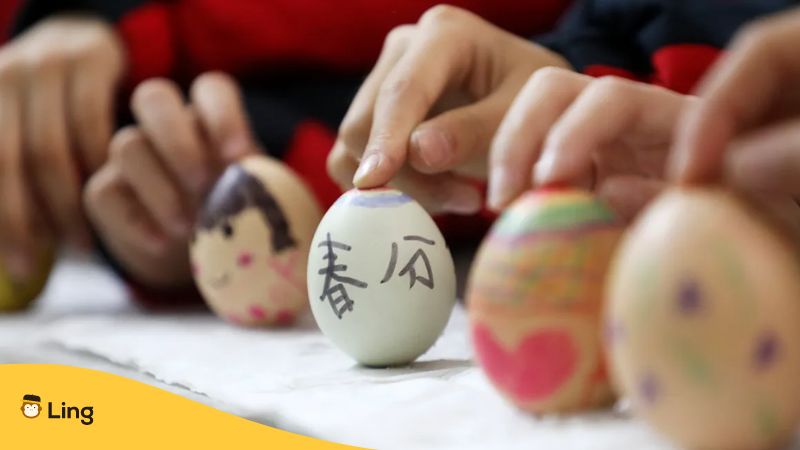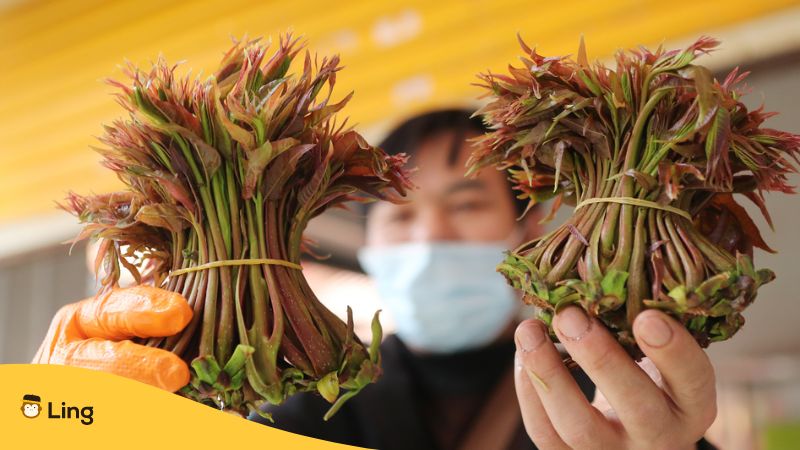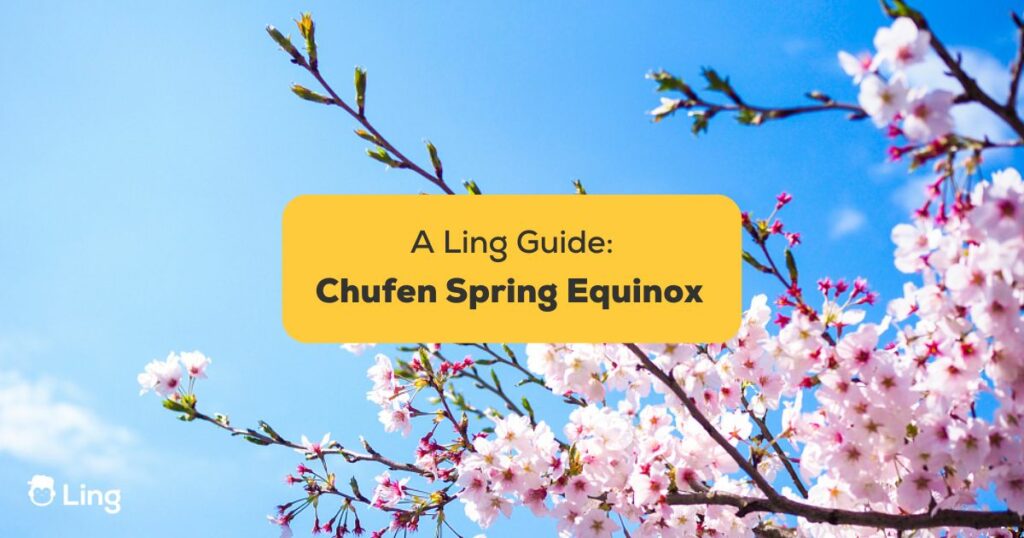We all know that Chinese New Year, also known as Lunar New Year and 新年 (xīn nián), is all about welcoming the spring season, or as we say in Chinese, 迎接春天 (yíng jiē chūn tiān).
With grand celebrations like lion dance (舞狮) performances and big family reunion dinners (团圆饭), there’s no doubt that spring, which symbolizes rebirth and renewal, is an important part of Chinese culture. But did you know that the ushering in of the spring season doesn’t just end there?
Enter Chunfen Spring Equinox. Chunfen in Chinese is 春分. The word 春 (chūn) means “spring”, while the word 分 (fēn) means “to divide” or “part”. Put together, Chunfen means “to divide the spring”. In this guide, you’ll find out soon enough why this name makes perfect sense, as well as learn some simple Chinese words and phrases.

What Is Chunfen Spring Equinox?
Spring Equinox or Chunfen, also known as the Vernal Equinox, is when day and night are perfectly divided to be of equal length. That means one day with exactly twelve hours of sunlight and exactly twelve hours of moonshine! Now you know why its name Chunfen is so fitting.
The day that this happens is March 20th every year. It’s when the sun crosses the equator, heads north, and marks the beginning of spring in the Northern Hemisphere. According to observations dating back to Ancient China, this is when the weather turns warmer, birds migrate north, rain gets heavier, and plants become more abundant than ever.
Chunfen is one of the twenty-four solar terms (二十四节气) on the Chinese lunar calendar. More specifically, it’s the fourth solar term (第四节气)! If you’re not sure what solar terms (节气) are, they’re the equal division of the solar year into twenty-four segments based on the sun’s position. This is a traditional Chinese practice that has been around since the Zhou dynasty. That’s more than two thousand years ago!
Three Pentads Of Chunfen Spring Equinox
That’s not all there is to solar terms. Each term can be divided into three parts, known as pentads (候). They specify the changes in weather patterns that occur during each solar term. It’s a signal informing people about seasonal changes in greater detail, thus helping them to adapt accordingly.
There are three pentads in Chunfen: First Pentad (初候), Second Pentad (次候) and Last Pentad (末候). Here’s a more detailed breakdown of each one:
- First Pentad (初候): The dark birds arrive, or 玄鸟至 (xuán niǎo zhì). The “dark birds” here refer to swallows, which are often associated with the arrival of spring in Chinese culture. At this time, swallows make their northward migration, thus marking the end of winter and the start of spring.
- Second Pentad (次候): Thunder sounds, or 雷乃发声 (léi nǎi fā shēng). This alludes to how spring thunderstorms occur frequently. This translates to more rainfall and thus flourishing plants.
- Last Pentad (末候): Lightning begins, or 始电 (shǐ diàn). While this refers to thunderstorms as well, it also refers to how the sun shines longer and how the day gets longer as a result.

How To Celebrate Chunfen Spring Equinox
Before we delve into this, there’s something I have to tell you. Did you know that the sun isn’t the only one that’s celebrated? The moon gets some love too, not on Chunfen, but on Qiufen (秋分) Autumn Equinox. Qiufen is the complete opposite of Chunfen. Instead of the northern one, Qiufen comes in the Southern Hemisphere.
Nevertheless, archives from the Ming and Qing Dynasties point to rituals held on both occasions being grand national celebrations. All right, now that you know about Chunfen and Qiufen, let’s talk about some the of things people normally do on the former.
Pray And Offer Sacrifices To Gods And Ancestors
On Chunfen, people pray and offer sacrifices to Gods, particularly the God of Land or 土地公 (tǔ dì gōng), as well as their ancestors to wish for a good harvest. Some go the extra mile by visiting their ancestors’ tombs to pay respects, hoping they’ll give them even more blessings.
But that’s not all. People in areas like southern China don’t stop at offering sacrifices; they go even further by holding performances called Shexi (社戏), or “village opera” in English, to express their heartfelt gratitude to the Gods.
Engage In Games And Activities
Chunfen’s festivities don’t stop at rituals; there are games and fun involved too! In particular, people play an egg-standing game, where they paint eggs and compete to see who can make them stand upright for as long as possible.
This is a reference to how the Sun reaches the celestial longitude and latitude of zero degrees during this time, thus marking the fourth solar term. This is a popular game amongst kids, who channel their creativity and competitiveness into this once-in-a-year event.
Other than this, people engage in activities like going on a spring outing, coming together to eat spring vegetables and soup, and flying kites (放风筝). What better way to usher in the spring than indulging in spring vegetables, going out to fly kites, and enjoying beautiful nature?
Gathering and Harvesting Herbs
Spring means everything is in full bloom, so it’s the perfect time for outdoor activities like farm work. More specifically, gathering herbs to make herbal medicine and medicinal food. This pays homage to the Traditional Chinese Medicine (TCM) concept of keeping the human body healthy by consuming energy from nature and herbs.
Just because it’s medicine, it doesn’t mean that it has to be bitter! Aside from making sweet but healthy desserts, people also pick Chinese spinach (苋菜) in the wild and make dishes such as bamboo shoots (竹笋) with stir-fried eggs or smoked bacon.

Easy Chinese Phrases For Chunfen Spring Equinox
Now that you know what Chunfen Spring Equinox has to offer, here are some useful Chinese phrases related to the celebration that you can learn!
| Chinese Phrase | Pronunciation | English Translation |
|---|---|---|
| 春天来了! | chūn tiān lái le! | Spring is here! |
| 春分快乐! | chūn fēn kuài lè! | Happy Spring Equinox! |
| 天气变暖了。 | tiān qì biàn nuǎn le. | The weather is getting warmer. |
| 花儿开了! | huā er kāi le! | The flowers are blooming! |
| 太阳出来了! | tài yáng chū lái le! | The sun is out! |
| 鸟儿开始唱歌了! | niǎo ér kāi shǐ chàng gē le! | The birds are singing! |
| 这个季节真是让人心情愉快啊! | zhè gè jì jié zhēn shì ràng rén xīn qíng yú kuài ā! | This season truly brings joy to people’s hearts! |
Ready To Experience Chunfen Spring Equinox?
So you see, the celebration of spring doesn’t end at just Chinese New Year; there’s Chunfen Spring Equinox, too! Similarly, learning Chinese doesn’t end at just the phrases you’ve learned in this article, there’s the Ling app! If you want to learn more than just a few phrases, download the app and start your fun gamified lessons.
Just like how spring is all about ushering in new things, you can make learning Chinese one of your resolutions for the year! So if you’re ready to know more than just Nihao (你好) and Xiexie (谢谢), try learning with the Ling app today.



































































